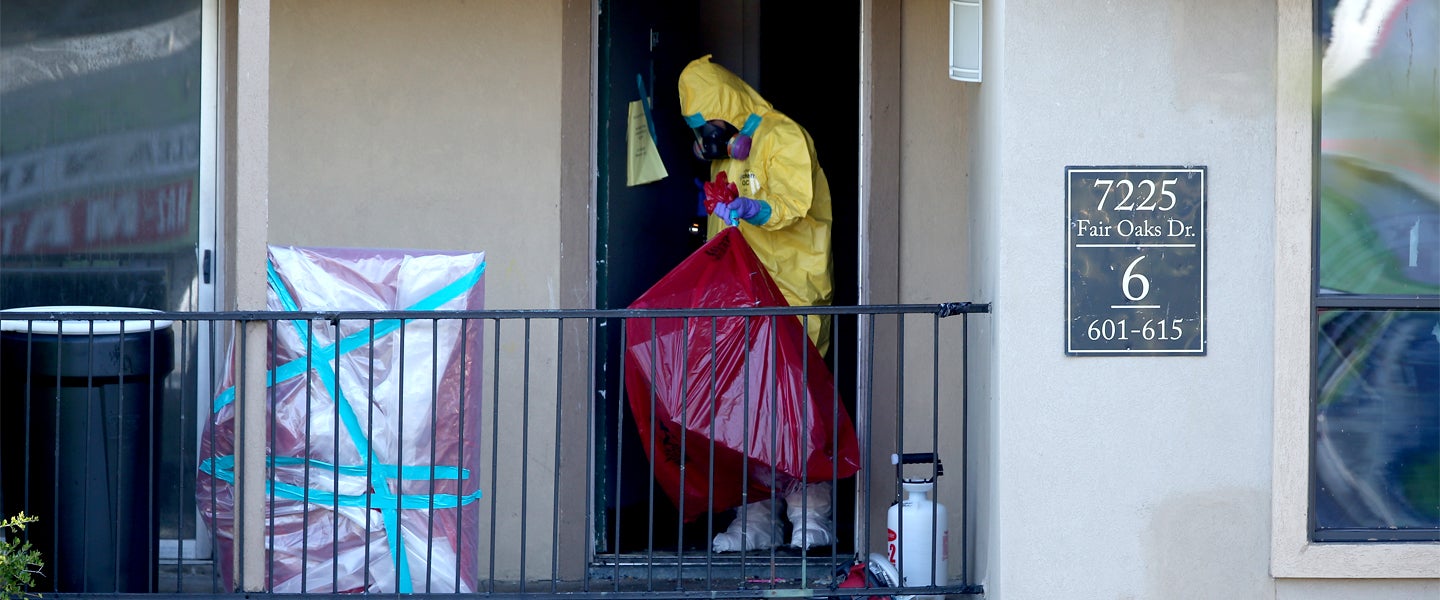I’ve never been to a crime scene, but on the morning after I finally got over the flu that kept me in the fetal position for nearly four days, my apartment looked like the sort of environment that requires a hazmat suit. There were crinkled up napkins everywhere, each with its own unique cocktail of yellow snot and syrupy spit. My sheets were damp with perspiration from three consecutive sweaty nights. The coffee table was covered in a variety of cups and bowls of half-drunken juice and soup. Even as I was seemingly in flu recovery, my apartment appeared to still be infested with fragments of this lethal contagion.
So I did what any sensible man — eternally devoted to seeking out the path of least effort in a sticky situation — would do: I lit a match and set fire to my apartment and everything inside it.
Okay, no, sadly not. Instead, I began cleaning my apartment and wiping down surfaces while hoping that I wouldn’t again fall prey to an illness that had already taken four days of my twenties. Luckily, as I would later find out from Jason Tetro, author of The Germ Files and host of the Super Awesome Science Show podcast, I was safe. “The key is to understand that the flu has a relatively short shelf-life outside of the body, which is less than a day,” says Tetro. “Any visual contamination — disturbance in the normal look of the fabric that suggests contamination with a fluid, like dried spots, for example — should be thrown out or laundered, and if there is a risk for any contamination on surfaces, they should be disinfected.”
To his point, per a 1982 study in the Journal of Infectious Diseases, both influenza A and B viruses only survived for 24 to 48 hours “on hard, nonporous surfaces such as stainless steel and plastic.” And on cloth, paper and tissues, the viruses didn’t make it past 12 hours. “Measurable quantities of influenza A virus were transferred from stainless steel surfaces to hands for 24 hours and from tissues to hands for up to 15 minutes,” per the study. “Virus survived on hands for up to 5 minutes after transfer from the environmental surfaces.”
All of which is to say that the odds of a friend of mine contracting a virus from my contaminated apartment are fairly low, as long as they wait a day.
Still, the process of disinfection comes in many forms and to varying degrees. Tetro, for his part, suggests that any grocery-store disinfectant should be enough to rid the surfaces in your apartment of the virus. But in case you’re particularly OCD about making sure your apartment is no longer a contaminated space, Allen Cohen, the CEO and owner of Bio Socal, a crime-scene cleanup service in L.A., tells me that you can start by removing your carpet and cleaning the contaminate from the subfloor.
“In the case of laminate floors and wood floors, we clean and spray down a chemical that, if there’s any blood or protein matter, it’s going to react very similar to the way peroxide bubbles up on a cut on your arm,” he says. “The floor may be completely clean to the visual eye, but in hard floors, blood and bodily fluids have surely gotten in between cracks and floor boards. So once we get that reaction coming out of the seams, we remove the floorboard. If it’s absorbed too far in the wood, we actually have to cut it out.”
That said, please don’t cut out your floors just because you had the sniffles, mainly because, according to Tetro, if you’ve recovered from your illness, you’ll have immunity to that particular strain anyway. “That means anyone who hasn’t been vaccinated will be susceptible to infection,” he says. “That doesn’t mean they will be infected, but the risk is there.”
But that’s not your problem anymore, am I right? If you do care, Tetro says that you don’t need to worry too much about infecting your guests because it takes a lot of contact with the virus to contract the flu. “You still need to be exposed to several hundred viruses in order to be infected,” he says. “Unless there’s visual contamination, that level most likely won’t be achieved. And as I said earlier, if there is visual contamination, you should throw out or launder.”
Again, the research backs him up, with a 2016 study on the environmental deposition of influenza virus from patients infected with influenza stating that, although “data suggest that environmental contamination occurs, it isn’t usually extensive or heavy.”
And if you’re still not convinced, play it safe: Light a match and let nature’s most effective decontaminate do the rest for you.

